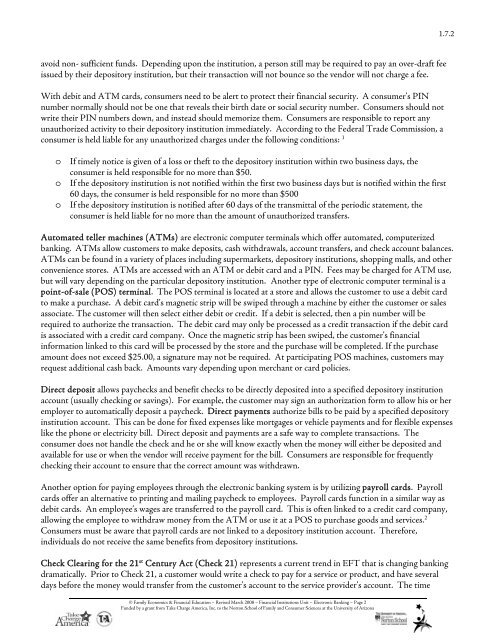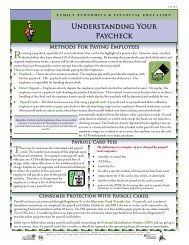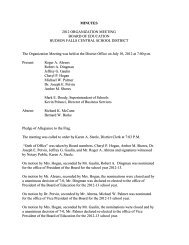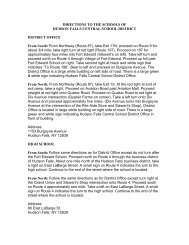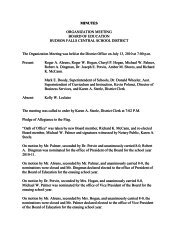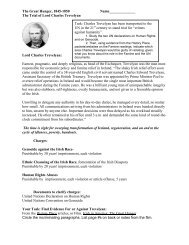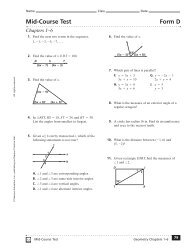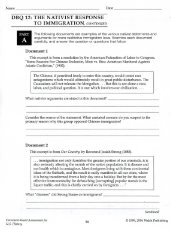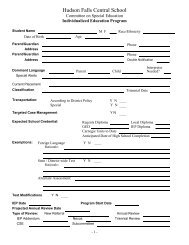Electronic Banking Lesson Plan
Electronic Banking Lesson Plan
Electronic Banking Lesson Plan
Create successful ePaper yourself
Turn your PDF publications into a flip-book with our unique Google optimized e-Paper software.
1.7.2avoid non- sufficient funds. Depending upon the institution, a person still may be required to pay an over-draft feeissued by their depository institution, but their transaction will not bounce so the vendor will not charge a fee.With debit and ATM cards, consumers need to be alert to protect their financial security. A consumer’s PINnumber normally should not be one that reveals their birth date or social security number. Consumers should notwrite their PIN numbers down, and instead should memorize them. Consumers are responsible to report anyunauthorized activity to their depository institution immediately. According to the Federal Trade Commission, aconsumer is held liable for any unauthorized charges under the following conditions: 1o If timely notice is given of a loss or theft to the depository institution within two business days, theconsumer is held responsible for no more than $50.o If the depository institution is not notified within the first two business days but is notified within the first60 days, the consumer is held responsible for no more than $500o If the depository institution is notified after 60 days of the transmittal of the periodic statement, theconsumer is held liable for no more than the amount of unauthorized transfers.Automated teller machines (ATMs) are electronic computer terminals which offer automated, computerizedbanking. ATMs allow customers to make deposits, cash withdrawals, account transfers, and check account balances.ATMs can be found in a variety of places including supermarkets, depository institutions, shopping malls, and otherconvenience stores. ATMs are accessed with an ATM or debit card and a PIN. Fees may be charged for ATM use,but will vary depending on the particular depository institution. Another type of electronic computer terminal is apoint-of-sale (POS) terminal. The POS terminal is located at a store and allows the customer to use a debit cardto make a purchase. A debit card’s magnetic strip will be swiped through a machine by either the customer or salesassociate. The customer will then select either debit or credit. If a debit is selected, then a pin number will berequired to authorize the transaction. The debit card may only be processed as a credit transaction if the debit cardis associated with a credit card company. Once the magnetic strip has been swiped, the customer’s financialinformation linked to this card will be processed by the store and the purchase will be completed. If the purchaseamount does not exceed $25.00, a signature may not be required. At participating POS machines, customers mayrequest additional cash back. Amounts vary depending upon merchant or card policies.Direct deposit allows paychecks and benefit checks to be directly deposited into a specified depository institutionaccount (usually checking or savings). For example, the customer may sign an authorization form to allow his or heremployer to automatically deposit a paycheck. Direct payments authorize bills to be paid by a specified depositoryinstitution account. This can be done for fixed expenses like mortgages or vehicle payments and for flexible expenseslike the phone or electricity bill. Direct deposit and payments are a safe way to complete transactions. Theconsumer does not handle the check and he or she will know exactly when the money will either be deposited andavailable for use or when the vendor will receive payment for the bill. Consumers are responsible for frequentlychecking their account to ensure that the correct amount was withdrawn.Another option for paying employees through the electronic banking system is by utilizing payroll cards. Payrollcards offer an alternative to printing and mailing paycheck to employees. Payroll cards function in a similar way asdebit cards. An employee’s wages are transferred to the payroll card. This is often linked to a credit card company,allowing the employee to withdraw money from the ATM or use it at a POS to purchase goods and services. 2Consumers must be aware that payroll cards are not linked to a depository institution account. Therefore,individuals do not receive the same benefits from depository institutions.Check Clearing for the 21 st Century Act (Check 21) represents a current trend in EFT that is changing bankingdramatically. Prior to Check 21, a customer would write a check to pay for a service or product, and have severaldays before the money would transfer from the customer’s account to the service provider’s account. The time© Family Economics & Financial Education – Revised March 2008 – Financial Institutions Unit – <strong>Electronic</strong> <strong>Banking</strong> – Page 2Funded by a grant from Take Charge America, Inc. to the Norton School of Family and Consumer Sciences at the University of Arizona


